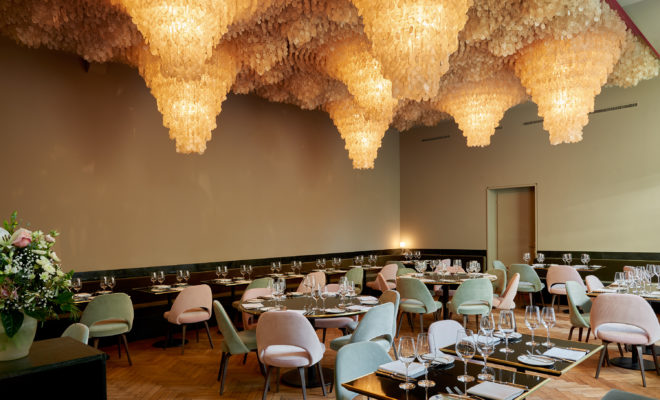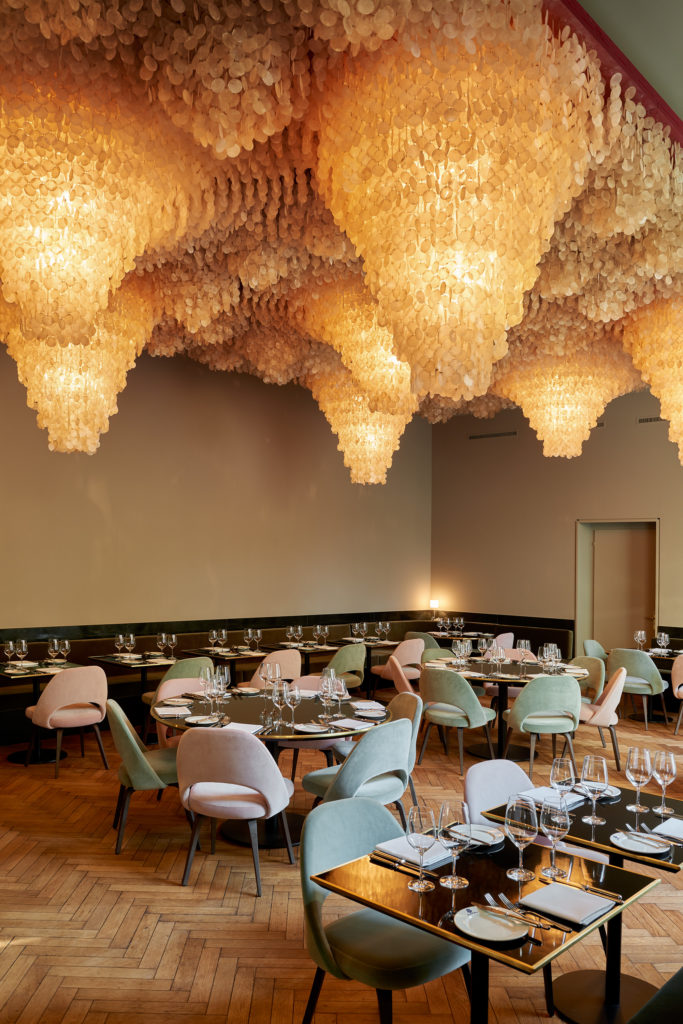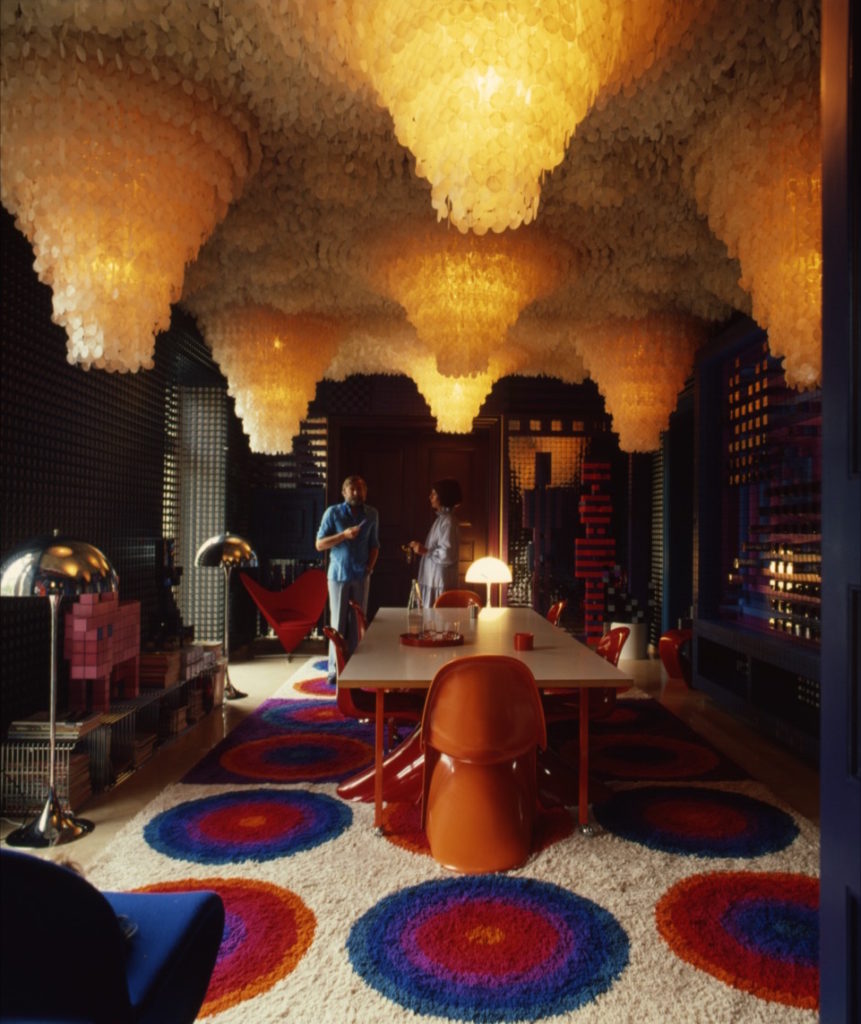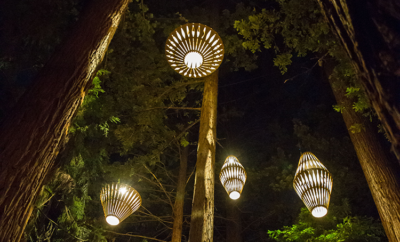 BASLER KUNSTVEREIN / PHILIPP HÄNGER PHOTO
BASLER KUNSTVEREIN / PHILIPP HÄNGER PHOTO
Design
Shell Out
THE FURNITURE AND LIGHTING OF DANISH designer Verner Panton—vibrantly colored, idiosyncratic in form, composed of then cutting-edge materials—helped shape the aesthetic zeitgeist of the 1960s and ’70s. Some of his pieces—the Heart Cone chair, the cantilevered plastic Panton chair— remain popular and enduring icons of the era. Yet some of Panton’s most striking and innovative creations were also the most ephemeral.

Verner Panton’s unique shell lighting installation, 1972–1987, as now seen in situ at the Kunsthalle Restaurant in Basel, Switzerland. BASLER KUNSTVEREIN / PHILIPP HÄNGER PHOTO
From the late ‘60s on, in the mature phase of Panton’s career, when he left behind the craft- and wood-oriented design milieu of Denmark to set up an office in Basel, Switzerland, he turned to creating—the word “interiors” just doesn’t do him justice—environments. In restaurants, a hotel, cafeterias, and conference rooms, he devised spaces featuring textured walls, saturated colors, eye-popping patterns, and dense lighting arrays. His most memorable environment was among the shortest lived. Called Visiona 2, it was an installation—commissioned by the Bayer conglomerate for a Cologne trade fair in 1970 and built inside a boat on the Rhine River—centered around a sort of hallucinatory cavern lined entirely with plush blue and orange biomorphic forms that doubled as seating. No LSD required.

Verner Panton. COURTESY OF CARIN PANTON VON HALEM
Happily, a magnificent element from one of Panton’s audacious environments from the ’70s recently emerged into public view for the first time: an enormous ceiling lighting ensemble, comprising thousands of capiz shell discs, that once hung in the dining room of the Panton family home in suburban Basel. Since late last year, it has illuminated the restaurant of the Kunsthalle Basel. “Carin Panton, the daughter of Verner Panton, and I are old friends. I saw the shell ceiling for the first time as a boy,” says Kunsthalle president Martin Hatebur. “When the house was sold, the shell ceiling went into storage for more than twenty-five years. I remembered it when we thought about renovating the former wine bar in the Kunsthalle Restaurant, and the Panton family generously agreed to loan it to us on a long-term basis.”

The fixture in its original location, the Panton family home in Switzerland. COURTESY OF CARIN PANTON VON HALEM
“For me,” he adds, “it is one of the most interesting design objects ever.” Given the recent increase in traffic at the restaurant, visitors seem to agree. Hatebur has advice for anyone else who wants to see the Panton extravaganza: “Book early.”












